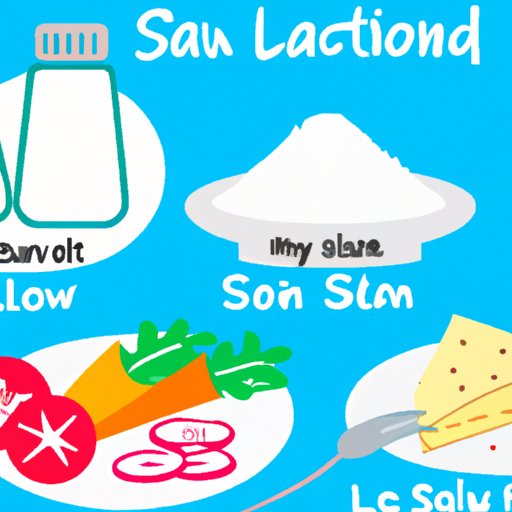Introduction
A low sodium diet is an eating plan that reduces or eliminates dietary sodium intake. It’s important to note that a low sodium diet isn’t the same as a salt-free diet. While salt is a source of sodium, there are other sources of sodium in food, such as monosodium glutamate (MSG), baking soda, baking powder and some preservatives. A low sodium diet helps to reduce the amount of sodium in your diet and can be beneficial for those at risk of high blood pressure, stroke, heart disease and other health conditions.

The Recommended Daily Intake of Sodium and How to Follow It
Understanding the risks of eating too much sodium is key to following a low sodium diet. The American Heart Association recommends that adults consume no more than 2,300 milligrams (mg) of sodium per day. For those with high blood pressure, African Americans, and those ages 51 and older, the recommended daily intake of sodium is 1,500 mg per day.
Adopting a low sodium diet can be done by reducing the use of salt when cooking, avoiding processed foods, and reading nutrition labels to identify the sodium content in food products. When shopping for groceries, look for food items with “low sodium” or “no added salt” labels. Eating out can also be tricky on a low sodium diet; however, many restaurants offer lower sodium options and are willing to accommodate dietary requests.
What Foods Should You Eat on a Low Sodium Diet?
High-sodium foods should be avoided on a low sodium diet. These include canned soups, processed meats, frozen dinners, fast food, salted snacks, sauces and condiments, and cured or smoked fish and meat. In addition, many processed foods contain hidden sources of sodium, so it’s important to read nutrition labels carefully.
Fortunately, there are plenty of low-sodium alternatives available. Fresh fruits and vegetables, whole grains, lean proteins, dairy products, and unsalted nuts and seeds all make excellent choices for a low sodium diet. Herbs and spices are also great for adding flavor without adding sodium.
Tips for Making Low Sodium Meals Tasty
Making low sodium meals tasty doesn’t have to be a challenge. There are many ways to add flavor to meals without relying on salt. Herbs and spices are a great way to add flavor without adding sodium. For example, garlic powder, oregano, basil, rosemary and thyme can all be used to add flavor to dishes. Citrus juice, fruit, wine and vinegar are also good alternatives to salt.
In addition, there are many low-sodium substitutes available that can be used to enhance the flavor of dishes. For example, low-sodium soy sauce, Worcestershire sauce, bouillon cubes, and vegetable broth can all be used as flavorful alternatives to regular salt. Vinegar, lemon juice, and hot sauce can also be used to add flavor to meals without adding sodium.
Conclusion
Following a low sodium diet can be beneficial for those at risk of high blood pressure, stroke, heart disease and other health conditions. Reducing the use of salt when cooking, avoiding processed foods, and reading nutrition labels are all steps that can be taken to reduce sodium intake. Additionally, there are plenty of low-sodium alternatives available, such as fresh fruits and vegetables, whole grains, lean proteins, dairy products, and unsalted nuts and seeds. Finally, herbs and spices, as well as low-sodium substitutes, can be used to make low sodium meals tasty.
(Note: Is this article not meeting your expectations? Do you have knowledge or insights to share? Unlock new opportunities and expand your reach by joining our authors team. Click Registration to join us and share your expertise with our readers.)
